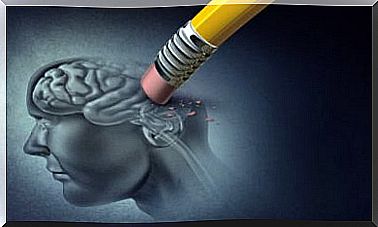Do You Know What Body Dysmorphia Syndrome Is?

You already know that we like to introduce you to unknown syndromes, pathologies and diseases; sometimes even for people who suffer from them, their symptoms going unnoticed, their treatment being absent and thus generating a poor quality of life. Today we will talk about an important and more common disorder than we think: body dysmorphia.
What is body dysmorphia?
It is characterized by an over-dimension of concerns that have to do with the different parts of the body and their appearance. Usually, the person experiencing the restlessness spends a lot of time on behaviors designed to alleviate it. On the other hand, her symptoms usually intensify when she feels observed.
Many of his behaviors are repetitive behaviors such as: continually examining himself in the mirror, grooming himself excessively, comparing himself to other people or hiding those parts of the body with which he does not feel emotionally well and perceives as negative.
I let you know about this disease because according to a study by the Spanish Society of Aesthetic and Reconstructive Plastic Surgery (SECPRE), in Europe and America the number of people suffering from body dysmorphia is increasing since their symptoms are socially considered ” normal” and not they are recognized as pathological, thus avoiding the early start of treatment.
This syndrome causes people to feel and perceive as “very ugly”, although their appearance is within the limits that are socially established to say that a person has a beautiful or pleasant appearance.
The parts of the body that usually cause the most concern are : skin, hair, nose, eyes, chin, lips or any other body part such as the knees, legs and chest.
A survey conducted in. Among 30,000 people, published in Psychology Today, stated that 93% of the women and 82% of the men questioned were concerned about their physical appearance and work every day to improve it and feel properly.
The majority of patients with this syndrome are young, with a higher number of men than women. Studies confirm that the onset occurs in adolescence, when the individual is more concerned with his image, feels more observed and has more social life. 17 years is the average age of first symptoms of the disorder.
Many of these young people undergo surgery, although dysmorphia is a mental problem, not a physical one. Because of this, the Doctor of Psychology, Gustavo Bustamante, says that surely many of the people who undergo cosmetic intervention are not and will never be satisfied with the results.
What are the causes of body dysmorphia?
Nowadays, society gives more priority to aesthetics and the exterior than to the personal interior or intelligence, without taking into account the true “inside” beauty .
The specialists dedicated to its study affirm the possibility that there is a double origin of the disease: the psychological and the biological . In biological terms, the explanation centers on a certain genetic predisposition to suffer a mental disorder and an imbalance in brain neurotransmitters.
On a psychological level, an exaggerated attention to oneself due to a lack of self-esteem, the way in which the person judges himself by his physique and excessive concern for a part of the body or resorting to rituals can contribute to suffering from the syndrome constant, look in mirrors for example.
How is it diagnosed?
The most important symptoms when it comes to detecting this disease are related to an abnormality in normal or basic activities such as :
- Avoid attending social events made up of many people.
- Self-harm generated by this dissatisfaction with their body image that later justify an aesthetic operation and supposedly be able to overcome that erroneous perception.
- Use of a large amount of time dedicated to the body issue on which you think you have a problem and can not find a solution.
What is your treatment?
Recognizing the problem as a psychological origin is the first and most important step , followed by correcting behaviors and habits, working on increasing their self-esteem , accepting themselves as they are both physically and internally.
It is also very important that family and friends around these people can support the treatment by generating ideas related to beauty and perfection according to the individual’s possibilities . Value even more, and emphasize the inner talent of the person in question by showing all the love we feel for her and her beautiful heart.
Love in any disorder, syndrome and pathology is vital and the healthiest , most beautiful and accessible ingredient that we can use together with an adequate psychological treatment for its improvement and surely overcoming. Giving a lot of love to the person and showing our unconditional support will help enormously in this case .









